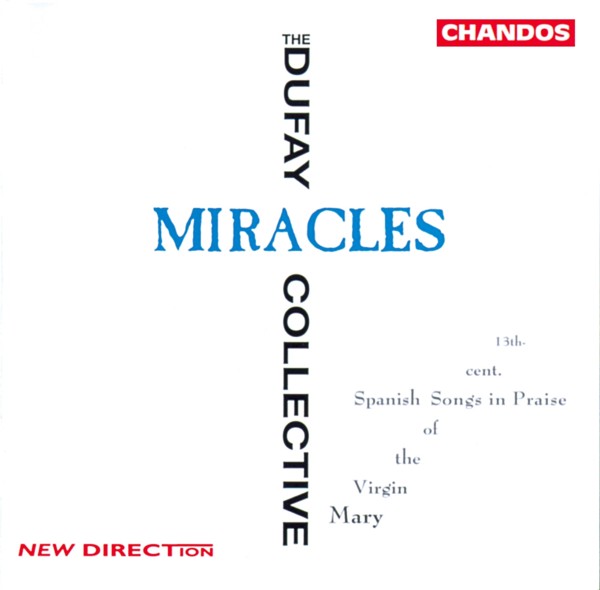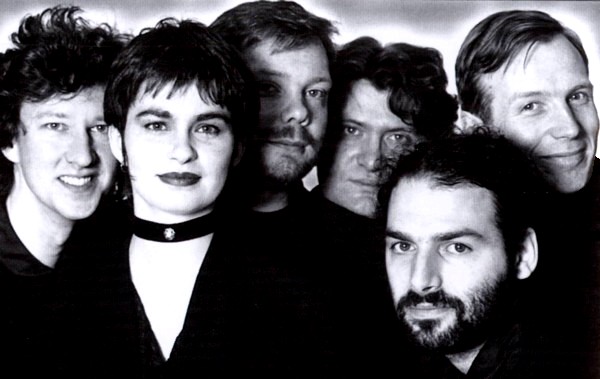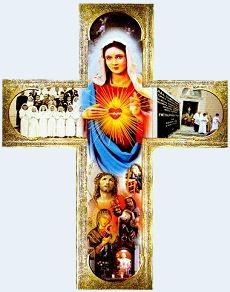
medieval.org
Chandos CHAN 9513
1997

medieval.org
Chandos CHAN 9513
1997
1. Beyeita es Maria [6:06]
CSM 420 Fiestas de Santa Maria
GL, WL, PB voices, PS, RM vocal drones, VE simfony
2. Procession [2:34]
CSM 207
GL, WL shawms, PB trumpet, PS, RM, SP percussion
3. Quen quer que na Virgen fia [7:31]
CSM 167
VE solo voice, GL, SP, RM rababs, PB, WL percussion, tutti refrains
4. Estampie on CSM 42 [4:45]
CSM 42
RM oud, GL, SP vielles, PS harp, WL long-necked lute, PB percussion
5. O Nome da Virgen Santa [7:18]
CSM 254
VE solo voice, GL, SP vielles, PS harp, RM oud, PB whistle, WL simfony
6. Instrumental [4:43]
CSM 37
GL, SP, RM, PB, PS rababs, WL percussion
7. Quen bõa dona [4:48]
CSM 160 Cantiga de loor
VE solo voice, WL simfony, tutti refrains
8. Eno pouco e no muito [7:30]
CSM 354
VE solo voice, RM, WL long-necked lutes, GL, SP rababs, PB, PS percussion
9. Instrumental [1:51]
CSM 249
WL, GL shawms, RM, PB percussion
10. Como pod' a groriosa [11:07]
CSM 391
VE solo voice, SP vielle, tutti refrains
11. Instrumental [2:00]
CSM 221
GL, PB whistles, WL flute, RM percussion
12. Sempr'a Virgen groriosa [7:44]
CSM 377
VE solo voice, RM oud, tutti refrains
13. Instrumental [3:37]
CSM 57
WL, GL shawms, PB trumpet, RM, PS, SP percussion

The Dufay Collective with Vivien Ellis voice
VE Vivien Ellis
PB Paul Bevan
GL Giles Lewin
WL William Lyons
RM Raphael Mizraki
SP Susanna Pell
PS Peter Skuce
Instruments
vielles - James Bisgood 1982, Raphael Mizraki 1995
rababs - Raphael Mizraki 1995
harp - Tim Hoborough 1993
simfony - Samuel Palmer 1980
oud - traditional Yemen
long-necked lutes - traditional Turkey
shawms - Robert Cronin 1993, Linsey Pollack 1991
trumpet - Nicholas Perry 1993
whistles - traditional India
flute - traditional India
frame drums - traditional Morocco, India
darabouka - traditional Egypt
tabor - Leo Stevenson 1990
cymbals - traditional Morocco, India
tambourine - anon. 1990
Source:
MS Cantigas de Santa Maria B.1.2 El Escorial [E2]
folios: 10v, 191v, 160, 63v, 209v, 231, 60v, 154v, 317v, 226v, 350v, 202, 308v, 77
Thanks to Dr Stephen Parkinson for all translations, pronunciation and invaluable advice.
Producer: Adrian Hunter
Sound engineer: Nicholas Parker
Assistant engineer: Richard Smoker
Editor: Ben Connellan
Recording venue: Orford Church; 27–29 February 1996
Design: Penny Lee
Booklet typeset by Dave Partridge
℗ & © 1997 Chandos Records Ltd P C
CHAN 9513

The Dufay Collective: Miracles
Alfonso
X ‘the Learned’ of Castile and Leon, King from 1252 to 1284, is so
called for his reputation as a patron of the arts and sciences. This
included major endowments to universities, and the commissioning of much
translation of scientific treatises from Arabic to Spanish or Latin.
The Cantigas de Santa María, a magnificent compilation of over
400 songs concerning the miracles and extolling the virtues of the
Virgin Mary, are something of an exception, in as much as they are
poetic and in Galician–Portuguese, not Castilian.
The subject
matter of the Cantigas ranges broadly from those ‘true’ miracles such as
resurrection and the curing of fatal wounds and illnesses to those
which are more concerned with the more commonplace ‘miracle’,
demonstrating the ability of the Virgin to administer her blessing to
the most humble of God’s creations (for instance, the saving of the
king’s pet ferret in ‘Eno pouco e no muito’). To the modern observer,
these narrative tales seem often bizarre, even comical, and on more than
one occasion politically ‘unsound’, the Virgin exacting punishment on
those who are non-believers, as well as those who are wrong-doers.
Indeed Her mercy is so even-handed that the worst are often as protected
as the best, provided they can demonstrate their devotion. Of course
the mood of the times is being reflected here – what are tales of
miracles if not morality guides? The medieval psyche was so suffused
with Christian imagery and the power of the Church that all aspects of
natural life could be explained quite adequately in religious terms.
Thus, the ‘miracle’ could embrace a bewildering variety of topics, from
the seemingly mundane to the supernatural.
The worship of the
Virgin Mary was particularly strong in medieval Europe. She was the
symbol of Pure Love, and Marianism quite possibly arose as the church’s
response to the new courtly devotion to the feminine ideal, whose main
exponents were the Troubadours. This image of the pure woman is somewhat
at odds with her representation in the Cantigas, in which we
often see her suffering worldly pangs of jealousy, anger and
spitefulness. Throughout, the Virgin is seen as worldly, almost
down-to-earth in her treatment of individuals.
The cult of
Courtly Love had by the late thirteenth century been virtually destroyed
as a result of the divisions wrought by the Albigensian Crusades which
branded the Troubadours, their masters and subjects as heretics, and
decimated the once rich lands of Provence. The court of Alfonso provided
a safe haven for those poets and musicians forced to flee their
homelands. The decision to write the cantigas in the lyric language of
Galician–Portuguese rather than Castilian, more used for prose and
didactic verse – was an obvious one, and in keeping with contemporary
lyric poetic convention. The vast majority of the Cantigas are in zejel
(virelai) structure, and have many affinities with the secular
Galician–Portuguese lyric, and the earthiness found in the satirical cantigas de escarnho.
It is doubtful whether the Cantigas
were ever intended for performance in one particular setting. There are
the Festal songs, quite obviously intended for performance on religious
feast days; others reflect the more courtly, sophisticated genre of the
solo devotional song, whilst the narrative tales of pilgrims, robbers,
fallen monks and swindlers have an immediate appeal, both in musical and
narrative content. Alfonso appears to have ordered the collections of
the cantigas for largely personal reasons. A desire for personal
salvation through an expression of devotion prompted the earliest
collection. Later, when his hold on the reins of power in Castile was
loosening, he needed a strong dynastic and political image of himself as
a king particularly favoured by the Virgin, vanquishing illness and
strife with her aid.
Since the ninth century there had been a
strong Moorish presence in the Iberian peninsula. By Alfonso’s time much
of the land had been reconquered by the Christians, and only the
kingdom of Granada survived until the fifteenth century under Muslim
rule. However, despite their religious differences, the Christians and
Muslims of Spain were closely integrated after 500 years of
co-existence. Arabic chivalry, science and literature had deeply
impregnated the culture of the land and is apparent to this day.
Whilst the Cantigas
are songs of Christian devotion it does not necessarily follow that
their style in performance is of a purely ‘European’ nature. A fusion of
northern European and Eastern musical instruments, vocal techniques and
poetry meant that the court of Alfonso the Learned produced a unique
meeting of East and West. The Cantigas de Santa María reflect this in their range of melodic styles, from processional hymns through melismatic troubadour influenced cantigas de loor (praise) to the boisterous melodies of the narrative chorus songs (cantigas de miragre).
As
a patron of the arts, Alfonso seemingly recognized the merits of all
cultures, and welcomed to his court poets, singers and musicians from
all Europe as well as the Middle East. Of the twenty-seven musicians in
service at Alfonso’s death in 1284, some thirteen Moors are recorded,
with two women and a Jew amongst the rest. Apart from the songs, one of
the Cantigas manuscripts contains over forty depictions of
instrumentalists, usually in pairs. Whilst the inclusion of these
instruments cannot be seen as any justification for the mixing of voices
and instruments they do give a rare insight into the variety of
instruments in use at the time. Indeed, in one of the El Escorial
manuscripts of the Cantigas a choir of singers fronted by a
rabab, oud, psaltery, harp and percussion is depicted performing in a
palm grove. Of particular interest are the instruments still played in
Arabic countries today: the oud, long-necked lute, rabab, darabouka and
shawm are all clearly recognizable, their design having altered little
or not at all in 700 years. Quite what these musicians played, and in
what combinations is not known. It is probable that the loud
instrumental combination of shawms and trumpets would have been required
to play for processions on feast days and for dances, whilst at court
the estampie, that ubiquitous medieval dance would doubtless have
featured prominently, played on the quieter combinations of stringed
instruments.
William Lyons
© 1997 The Dufay Collective
Beyeita es Maria
Processional
for the Feast of the Assumption of the Blessed Virgin. How the Hosts of
Heaven received the Virgin when she was taken up to Heaven.
Quen quer que na Virgen fia
The
tale of a Moorish woman from Borja whose son dies of a grave illness.
Distraught, she sees how Christian women pray at the shrine of Holy Mary
of Salas, and decides to pray there too, much to the concern of her
kinsfolk. With a waxen image of her son, she prays all night, and in the
morning the Virgin has restored her child’s life. The Moorish woman
then converts to the Christian faith.
O Nome da Virgen Santa
Two
monks, tired of observing their offices, decide to take some time off.
They leave the monastery and wander along the riverbank, playing and
joking generally doing the devil’s work. Whilst here they see a small
boat coming towards them, full of figures talking animatedly. Curious,
the monks ask who they are. In a fierce voice, one of them replies that
they are in fact devils, taking the soul of a bailiff to hell.
Terrified, the monks call to the Virgin for protection, a wise move as
the devils were about to pounce on them. The two errant holy men return
to their monastery and never stray again.
Quen bõa dona
If you would praise a worthy lady, praise the Virgin Mary.
Eno pouco e no muito
The
king (Alfonso) has a favourite hunting ferret which he keeps in a
special cage on his horse when out hunting. One day, when they are
riding along, the cage door falls open and the little animal falls
beneath the horse’s hooves. The king, distressed, calls on the Virgin to
save his pet. Miraculously, the ferret emerges unscathed, proving that
the Virgin’s mercy extends to all God’s creatures, great and small.
Como pod’ a groriosa
A
crippled girl from Jerez whose feet face the wrong way, is taken by her
father on a pilgrimage to the great Port where there is a shrine to the
Virgin. They pray at the image of Holy Mary. During the night the girl
wakes in terrible pain, looks at her feet and realizes that, through the
power of the Virgin, her feet have been twisted back into shape and she
can walk.
Sempr’a Virgen groriosa
The king’s book
illuminator, Pedro Lourenço, is promised half a notaryship by the king
in return for his continued hard work. The clerk assigned to deal with
this keeps delaying, because the other half is owned by his friend and
he does not want Pedro to have the rest. When the deed is discovered,
Pedro prays to Santa Maria de Porto to make the clerk do his work. In
return he will donate 200 maravedis to her. The wrong is righted, and
all parties are satisfied, except for the clerk.